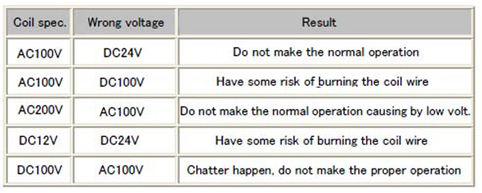An AC voltage of 200V was applied to a coil with rated voltage of 100VAC. Is there any problem?
Yes. When an AC voltage of 200V is applied to a coil with rated voltage of 100VAC,problems such as coil burnout may occur. As for problems caused by other incorrect voltage applications, refer to the following table.
Be careful not to apply other voltages than the rated voltage.